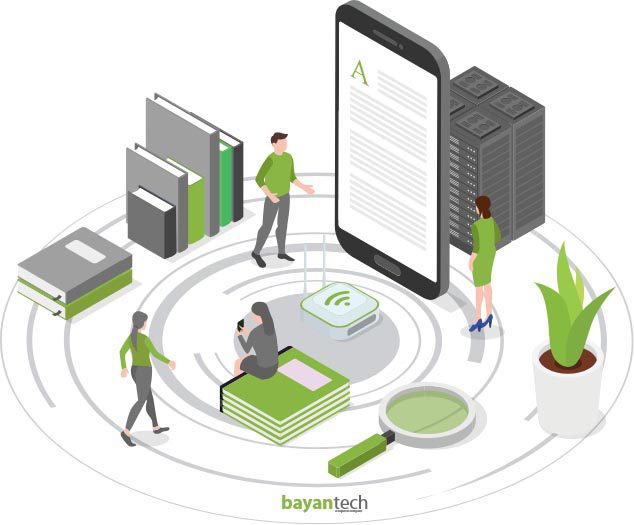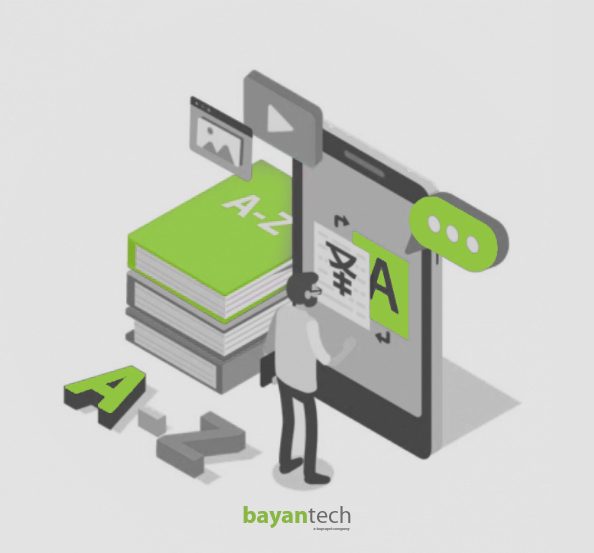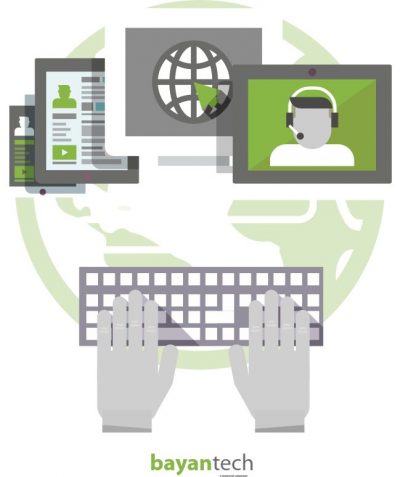We live in an increasingly globalized and digitalized world. From the mass adoption of smartphones to the rise of remote work and the internet of things, it seems like we’re always connected. But, aside from work or leisure, the internet can also become the cornerstone of the future of education, opening up a world of new possibilities irrespective of the location of a user.
eLearning has become the preferred educational channel of millions of students across the world. eLearning is a diverse and growing market. According to Statista, the global eLearning industry is expected to exceed 243 billion US dollars in market value by 2022. eLearning products come in all formats, targeting the training needs across numberless sectors. From MOOCs (Massive Open Online Courses), which are made available by universities to serve the needs of individuals, to tailored multilingual training programs, provided to global companies by specialized consultants.

If you’re in the eLearning industry, you know the power that the internet has. For instance, being online makes it possible for you to reach a global audience without a million-dollar budget. But, while you may not be facing the same expansion costs as other types of businesses, there are some investments you can’t forgo. For instance, you should invest in localization. If you’ll be reaching audiences in new locales, you can’t just speak to them in a foreign language, with a foreign cultural code, and expect to deliver a productive and impactful learning experience. It’s essential that you create multilingual courses, adapting your learning material to your new students’ language and culture.
Creating and distributing eLearning courses has never been so easy and cost-efficient. In this post, we’ll help you power up your expansion strategy by taking a look at the possibilities and challenges of multilingual eLearning.
Let’s start with why you should localize your eLearning courses.

Why You Should Create Multilingual eLearning Content?
According to numerous studies, English is spoken by over 500 million people worldwide. So, if your course is already in English, you may be wondering if having it translated is really necessary for you to grow.
There are two key factors you should have regarding the idea of English as a lingua franca: Not everyone who speaks English has a high level of proficiency, and even those who speak proficient English may not prefer it. As the widely-cited study “Can’t Read, Won’t Buy” by CSA Research noted, most people prefer to experience the internet in their native language (whether they’re shopping, reading, or interacting with others). If available, people always prefer to consume a high-quality translation in their native language, regardless of whether or not they speak a second language.
Last but not least, teaching in your students’ native language will improve retention rates, guarantee that their English proficiency level doesn’t hinder their learning experience, and make them feel part of a community. Providing educational resources in the students’ native language should be so primordial for educators that UNESCO advocates for it as part of the 2030 Agenda for Sustainable Development. While the organization especially focuses on guaranteeing accessible formal education to linguistic minorities, the importance of acknowledging linguistic diversity in learning spaces is universal.
Translating your eLearning course will allow you to reach a greater audience. And, with the technological tools at your disposal, there’s practically no limit to growth. But we wouldn’t be showing you the full picture if we didn’t mention something very important: Translation isn’t the only process involved in creating a multilingual course.

Is Translation Enough for a Multilingual eLearning Experience?
For eLearning courses to work, they need to be adapted to the target audience we want to address. Knowing your audience is the pillar of all eLearning tips. You can’t effectively teach if you don’t know who your students are, what they already know about the subject at hand, and what they need to know.
When it comes to international audiences, adapting your course to your students involves translating and localizing all eLearning content into different languages, cultures, and even connectivity infrastructures and legal systems.
From texts to videos and images, everything must be easy for your new audience to understand. And everything must be wrapped in an interface that they can navigate with no hassle. While translation is simply rendering words into another language, eLearning localization adapts both written and visual content, as well as technical aspects of your product. It’s not a simple process, and it definitely can’t be done by a single person, but it’s essential if you want your multilingual eLearning product to grow beyond language barriers and offer students a unique learning experience.
So, to ensure the success of the expansion of your multilingual eLearning products and to meet your students’ particular educational needs, it is necessary to have certain profound cross-cultural knowledge and the right tool stack. Of course, you can take this process off your shoulders and guarantee quality results by partnering up with a seasoned eLearning content localization specialist.
To help you navigate the localization process and collaborate with your localization specialists to create quality multilingual eLearning experiences, we’ll briefly explore 7 considerations for creating effective multilingual eLearning experiences.

Localization Is Not an Afterthought
Your localization efforts need to be the result of a carefully researched business strategy to succeed. The earlier you embark on the localization process, the better. Any business in a position to grow internationally should take it step by step, and market by market. Determining and analyzing your target audience is crucial. But why? It’s about more than just linguistic differences.
Conducting market research will ensure your multilingual eLearning product meets an existing need in your target market and that the material in question can be accessed by your students. For instance, not all countries have the same legal rules and regulations, so you must confirm that all content can be accessed, with no restrictions, by the target audience you want to address. What are the technical needs of your user? Are they likely to have a cutting-edge computer and a solid internet connection? Or will they access your course through a smartphone, using mobile data? What’s their preferred option? Does your pricing work for your target locale? What’s the best pricing localization strategy you could implement?
Additionally, consider all the elements of your platform that will need to be translated. You should consider all written content, user interface (UI) elements, audiovisual content, graphics… etc. Then you will have to identify the language to which you want to translate the platform. Does it use special characters? Is it right-to-left?
Ask yourself all these questions so that you can provide a better user experience for your students. Once you’ve defined the scope of your expansion efforts and needs, it is time to gather your material and get started. At this point, it’s best to reach out to an eLearning localization service. A specialized eLearning translation services provider will connect you to a team of highly-trained localization professionals who will deliver a solid new version of your product, ready to hit your target market.

Use Transferrable Language
Clarity is essential when creating any course, and it becomes even more important when it comes to multilingual eLearning. If the original content uses a simple writing style, properly contextualizes culture-specific examples, and doesn’t make too many unstated assumptions about the context or previous experience of the students, your eLearning localization process will be much easier.
When explaining complex ideas, one may try to facilitate their understanding through the use of jargon and idioms. It may do the trick in the original content, but if these idioms are not transferable to other languages, they will make translation and localization much more cumbersome than it could be. If the eLearning content is designed to appeal to the widest denominator possible (within your target demographic), it should be free of these issues.
On the topic of language, it’s also worth bringing up that depending on your course’s subject, there may be domain-specific terminology, which should be carefully translated. A good multilingual learning experience can only be achieved if the most complex technical material in your course is handled by experts. Ideally, an eLearning localization service provider will connect you to translators who are specialized in your domain and know how to handle domain-specific terminology according to your student’s locale.
The localization process can be extremely difficult for non-specialists, partially because they may not be fully aware of the complex intersection between culture and language. Fully understanding the cultural diversity of students and its influence on online learning is not an easy task.
Creating a multilingual platform involves being culturally sensitive. The wrong example may offend the audience in other regions.
Especially if your material is not audiovisual, you may find opportunities to use culture-specific examples. If students can relate, they will pay more attention to the content. For example, a soccer analogy may work in Argentina, but if your students are based in the US, you may want to refer to basketball instead. Approaching expansion (and localization) locale-by-locale allows you to tweak your material so your foreign students feel fully welcome.
We all belong to a specific culture. Oftentimes, you may overlook customs that are not your own or not take your time to fully understand them. While eLearning localization providers will make your content accessible to your new students, a learning experience involves far more than just consuming content, it’s not a monologue, it’s a dialogue.
Make sure you include enough opportunities for student feedback throughout the course. Once your student has completed a module, you could send them a satisfaction survey. One of the questions could be about your approach to their country’s cultural issues. Showing interest in their observations will improve your relationship with them. And they will surely be willing to provide you with suggestions to better your content.
Sign up to our newsletter to receive the latest blogs and news.
Localize your Media
Video-based learning is an interactive instructional strategy. It is widely used in eLearning because it garners great results. The use of visual elements has been proven to improve retention rates, keep the students engaged, and facilitate thinking and problem-solving.
Subtitles are the most cost-efficient and accessible way to make your audiovisual content multilingual. Avoid using videos or graphics that include text, since you will have to extract them and reincorporate them into the translated and localized version, which will make the process more complicated and expensive than it could be. Remember that eLearning translation is only about the words, but localization services will make all aspects of your multilingual eLearning platform work for your target audience.
Once you have studied your target audience and compiled the material that needs localizing, you can start the localization process for your multimedia. Three key factors you should have in mind for an integral multimedia localization process are:
- Proper audio dubbing/subtitling
- Adaptation of any animations or infographics to the local language
- Adaptation of dates, measurements, and other numbers

Don't Forget the Details: Symbols & Icons Are Important
Visual cues improve retention, create context, and make your multilingual eLearning platform more pleasant to look at (and spend time on). The symbols and icons in your eLearning platform are a part of the content that shouldn’t be overlooked. Every last visual detail will add up to a quality learning experience.
However, when expanding into other languages, you should consider that symbols and icons don’t work the same way in every country. Although they do not require translation, you may have to localize them according to the target culture.
Colors represent different meanings and set different tones, depending on beliefs and cultures. For example, in Japan, the color white represents mourning and misfortune, but it’s a celebratory color in the Middle East, where it’s often present in ceremonies such as weddings. So, an icon of a person wearing an orange t-shirt may have two extremely different meanings, depending on your target locale.
Choose a Multi-Lingual LMS
Especially if you’re delivering your course through a platform of your own (instead of a third-party platform, such as Udemy), you’ll need to take a look at your learning management system (LMS). Learning management systems are platforms that organize eLearning content and serve as a common platform for teachers and students. Some even include authoring tools, for an integrated teacher workflow.
Learn whether your platform supports multiple languages out of the box. If like many small businesses and individuals, you’re using WordPress with an LMS plugin on top, you should carefully evaluate your options, since you’ll need both an LMS and a plugin that organizes your localized content. Incompatibility between these two tools may result in 404 errors or a poor user experience.
If you’re considering changing your LMS, your ideal multilingual eLearning platform should:
- Provide a fully localized experience to your students. If it can geolocate them and only show them the content that’s relevant to them, all the better.
- Remain fast and accessible throughout locales. If you’re not self-hosting your LMS, make sure it’s delivered through a CDN (Content Delivery Network). If you’re self-hosting, make sure you use one.
- Be fully responsive and support low connections. This won’t only benefit those in low-connectivity areas but also make the platform easily accessible to students who may want to check your eLearning material on their phones, for example, while commuting.
- Have a pricing model that supports your growth. Make sure the costs associated with your LMS aren’t going to eat up your profit margin. Does your LMS of choice penalize or support growth?

Find the Right Language Partner
From consultants to universities, all actors in the international and multilingual eLearning sector share a common goal: to provide exceptional learning experiences that bring people closer to their goals. But to do that on an international scale, you need a language partner who can help you immerse yourself in your target culture and connect with locals.
Localization is a multifaceted process, and it’s best conducted by an experienced, multidisciplinary team working under the guidance of a specialized project manager. Partnering with trusted eLearning localization providers is a must.
The best translation services are those that are willing to take on the entire project from start to finish, covering every last detail and leaving your product ready to hit the market. With 15 years of experience supporting international enterprises, we at bayantech provide eLearning translation services and localization, powered by carefully vetted linguists who are native speakers and subject-matter experts, working with cutting-edge technology.
eLearning is here to stay, and multilingual eLearning platforms are helping thousands around the world grow professionally and personally. The demand for courses is ubiquitous across disciplines and across the world. So, if you’ve been considering entering new markets with a multilingual course, the time is now.











